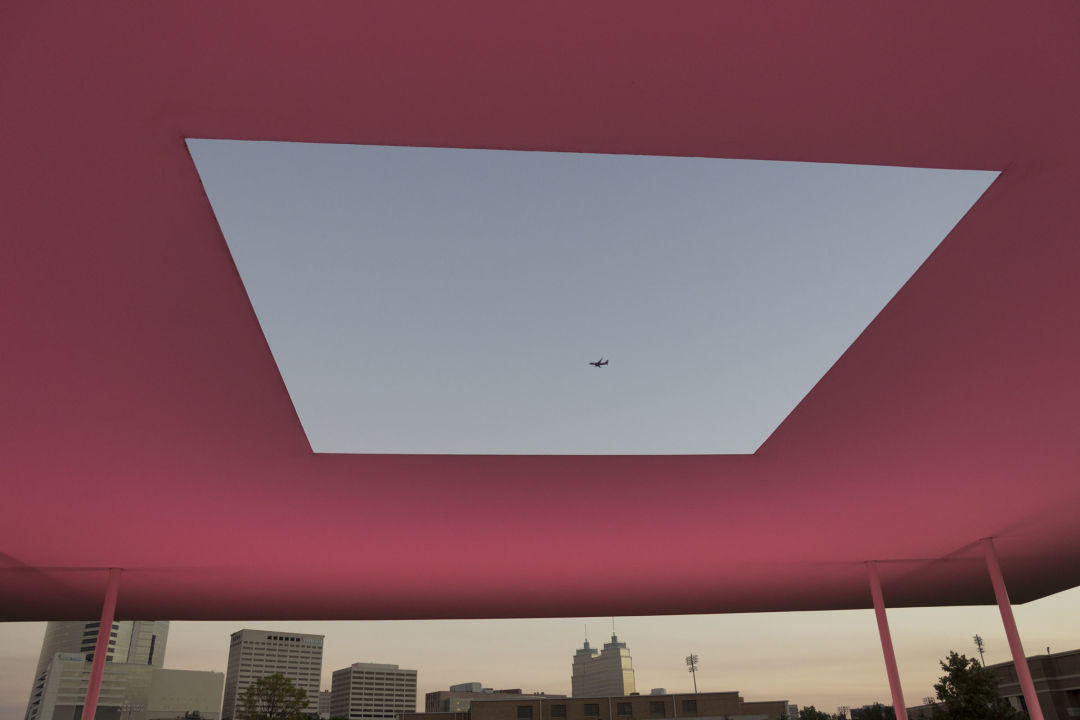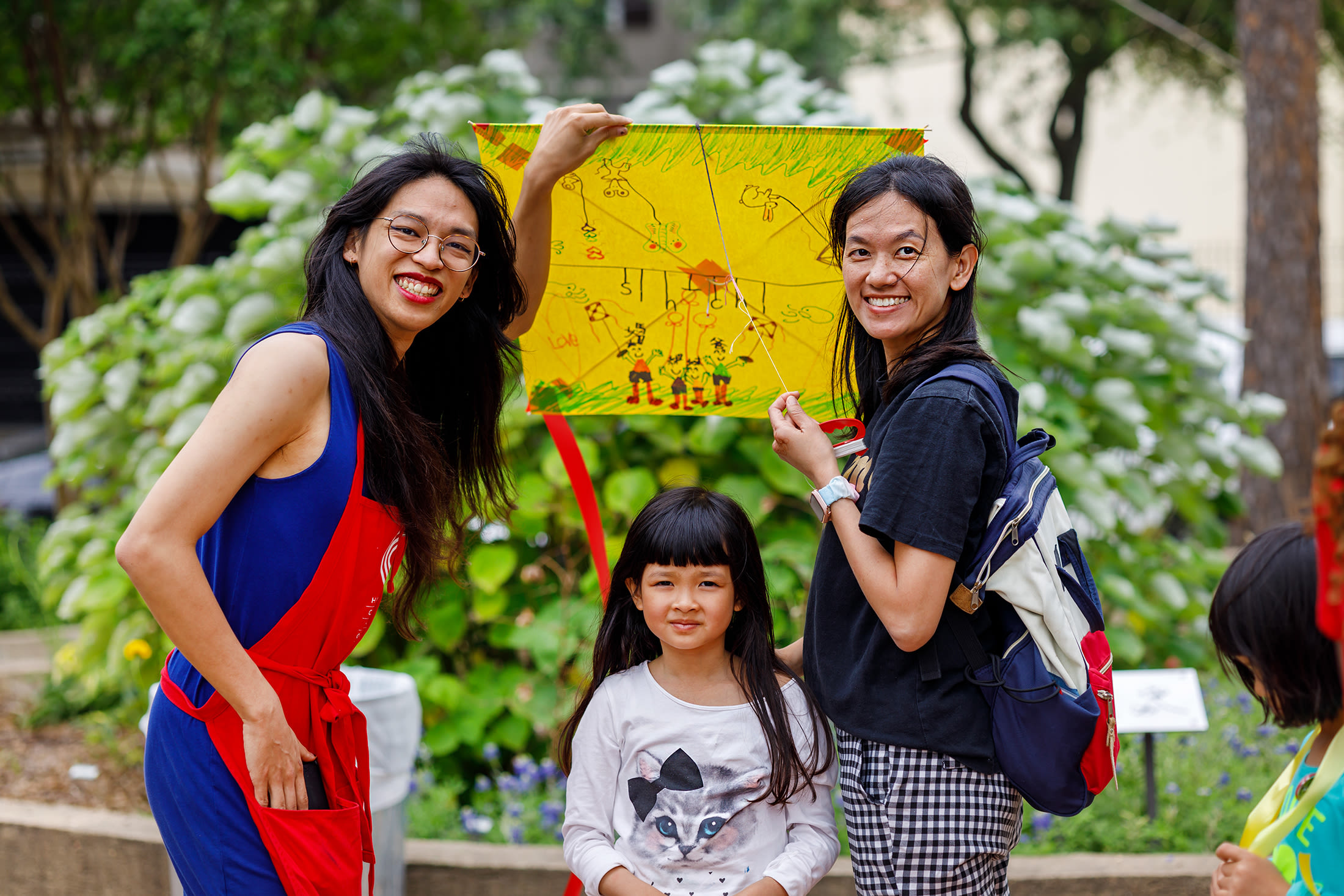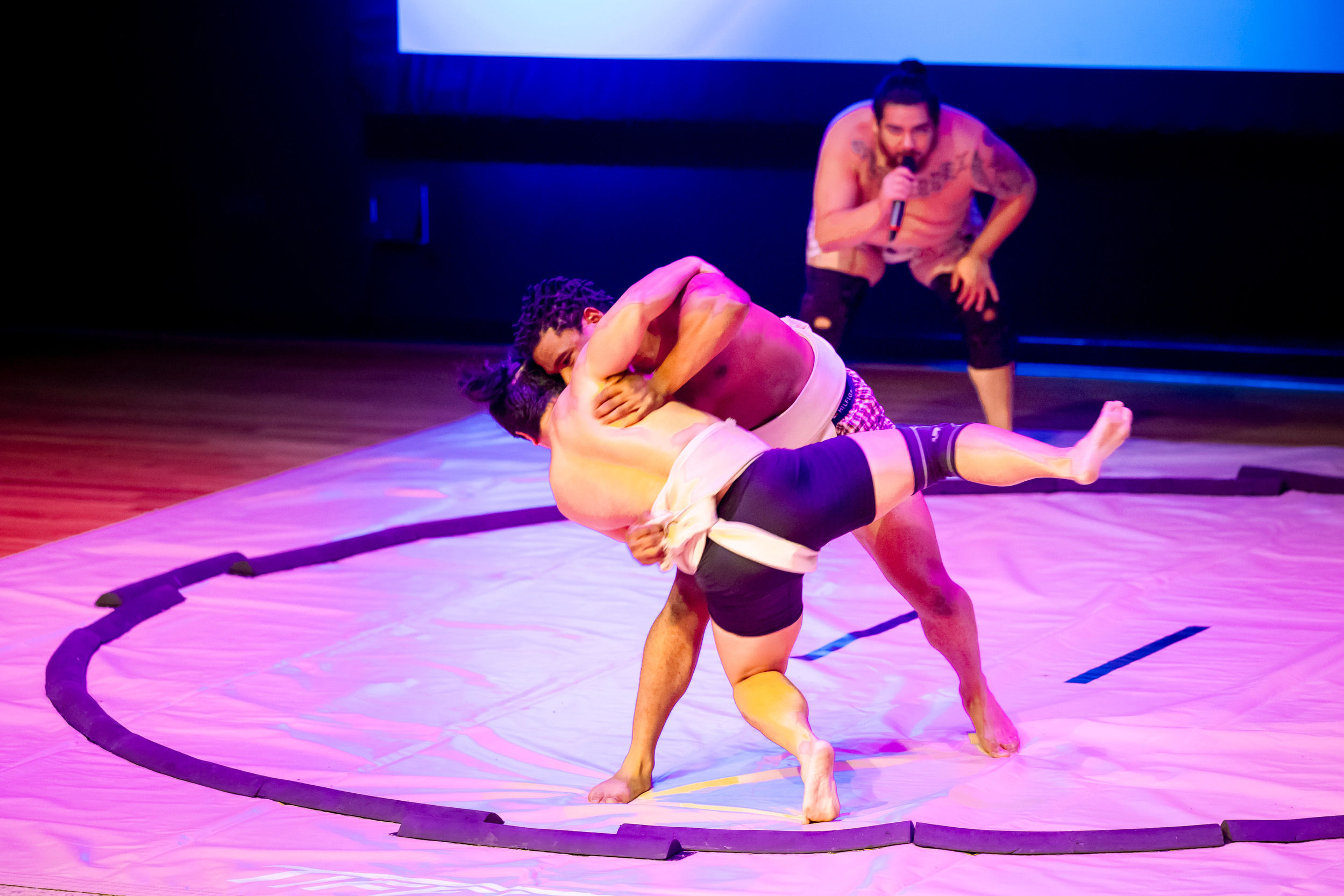At Rice, Houston's Wild Weather Made Manifest

A plane threads James Turrell's Twilight Epiphany Skyscape at Rice.
Image: Jonathan Lidbeck / Flickr
In his latest installation, George Lewis wants you to pay attention to the weather.
Remains of the Sky is a sound and light installation in dialogue with the James Turrell Twilight Epiphany Skyspace at Rice University. A computer program collects surrounding weather data from 3 a.m. to 6 p.m. each day and translates it into a 40-minute sequence of shifting colors, rhythms, and multi-channel sound.
Lewis, who is based in NYC but has been traveling back and forth to Houston since 2007, worked on the idea for a year in collaboration with Damon Holzborn. Since the installation is based on live data, every sequence will be a new experience—a direct response to the wind, sun, and temperatures of that day. Many of the nature and water sounds were collected from Houston bayous and parks for his 2015 CAMH Whispering Bayou installation. It's localized and based in real-time, allowing Houstonians to meditate on the immediate environment of their city. "People don't notice the weather unless it's raining on them," he said. "I wanted to compress climate—an indefinable, vague concept—into something you can hear and see."
The first night of the installation, it was hard to hear anything, mostly because there were a lot of people there for the debut. Some were crammed into the upper-level seats, others hovered outside on the grassy lawn, all straining to hear the "performance."
The weather that day had been static and the installation sounds were muffled, all but drowned out by the restless kids, crying baby, and murmured conversations. "Are we waiting for something?" someone whispered—whether facetiously or in earnest, I couldn't tell. After 40 minutes, the glowing colors finally drained into black, and people burst into hesitant applause. "I wonder what would happen if it were like, thundering and lightning and sh*t," I overheard someone say as they exited.
Lewis decided the levels needed adjusting. "I didn't realize how much the structure would amplify human voices," he told me. After the Hear&Now concert later that night, where musicians from the Shepherd School of Music performed a program that included his piece "Born Obbligato" (2013), Lewis went back to the installation and spent the rest of the evening video recording and tinkering.
I promised I'd go back to the installation for a second time, and on a cold, wet evening a few days later I wandered in and unfolded myself onto an empty bench. It had been raining intermittently throughout the day, and despite the loud, endless dripping outside, I was taken aback by the immediacy of the sound effects. One moment it sounded like I was in a very dense rainforest, and then I was plunged into a busy street intersection, with car horns, squealing tires, and ambulance sirens radiating from every corner of the space (I had initially mistaken the sirens as coming from the nearby Medical Center).
A lone violin played a Mendelssohn excerpt, followed by human voices: people laughing and speaking in different languages; children quarreling; a man chanting a prayer with congregational response; and a street band rehearsing. There was a series of tones so high-pitched I couldn't tell whether they were the screeching of car brakes or tropical birds. Underneath it all droned a constant background pitch—an unearthly tone, like something you'd hear at the bottom of the sea, or from a massive tectonic plate—invisible but ominous. All these sounds faded in and out, made even more eerie by the accompanying tranquility of the night sky.
The piece was meant to be slightly unsettling. "I want people to think of the concept of climate change," Lewis said. "Because if they do, then there’s still a chance we can do something about it. If they can listen to the weather and have it translated, maybe they'll have a sense of how beautiful it is, and how fragile it can be. Hurricane Harvey was not directly an inspiration, but we all have to respond to it, and it's definitely a part of the thinking that animates this work."
The usual light show at Twilight Epiphany is silent; it’s meant to be meditative and calming, a reflection on the environment. Lewis' installation, while equally subtle, imbues it with emotional immediacy. It's as if he peels back a hidden layer and reveals the humanity of the environment. And that's much more disquieting. The concept of weather and climate change is often too far removed to demand a personal response. But Lewis transforms cold data into something much more compelling; it provokes without prescribing, like good art should do. Remains of the Sky allows us to see the weather and hear the weather, and in doing so compels us to respond to it.
Thru Nov. 4. Free. James Turrell Skyspace, 6100 Main St. 713-348-2787. More info at moody.rice.edu.




